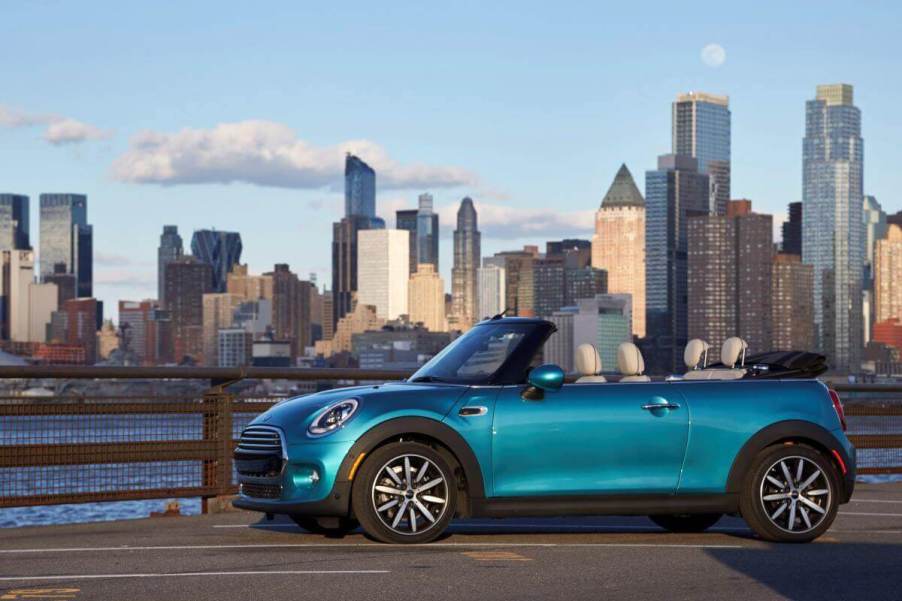
The True Costs of Mini Cooper Maintenance
The Mini Cooper is the puppy of compact cars. Since the modern Cooper launched in 2002, reviewers have heralded it as fun, playful, cute, and rambunctious. Also, like puppies, Mini Coopers can be a handful and costly to own. However, considering that Mini is a BMW-owned premium brand, are Mini Coopers very expensive to maintain, and if so, what are the maintenance costs?
We’ll answer those questions and offer practical advice on the model years to avoid and how to housebreak your Mini Cooper.
Are Mini Coopers expensive to maintain?
According to RepairPal, a Mini Cooper’s average annual repair cost is $846 for multiple model years. That doesn’t include maintenance and varies depending on the car’s age, mileage, condition, and the shop doing the work.
Similarly, in Edmunds’ breakdown of ownership costs for a 2019 Mini Cooper, maintenance and repairs totaled $14,724 over five years for an average of $3,670 annually. Repairs contributed $4,172 to that amount.
That amount is almost twice the average of a 2019 Toyota Corolla, which Edmunds estimates at $7,939 for five years of repairs and maintenance. Of that amount, $2,374 covers repairs.
What are common Cooper maintenance costs?
Maintenance costs include labor and parts such as oil changes, brake servicing, tire changes, and battery replacement. Most of the components needed for Mini Cooper maintenance are BMW parts, meaning you’ll pay more than you would for Corolla parts.
Here’s a breakdown of Mini Cooper maintenance costs, according to Engine Patrol:
| Mini Cooper Maintenance | Cost |
| Average annual repairs and maintenance | $846 |
| Tune-up | $324 |
| Alternator replacement | $873–$1,213 |
| Oil change | $193–$224 |
| Wiper blade replacement | $93–$101 |
| Air filter replacement | $92–$117 |
| Battery replacement | $382–$403 |
| New brakes | $194–$266 |
| Coolant change | $143–$180 |
| New tires (set of four) | $619–$632 |
| New tire (one) | $155–$158 |
| New spark plugs | $154–$206 |
| Tire and wheel assembly, rotate, and balance | $79–$100 |
| New transmission | < $3,000 |
Avoid these Mini Cooper model years
We covered some of this info a couple of years ago in an article about the Mini Cooper model years to avoid. Later models generally have much better reliability than the first and second generations, produced from 2002 to 2013, according to Vehicle History.
The model years with the lowest reliability scores are from 2006 to 2012, with the 2011 model year being a particular standout. Additionally, Mini redesigned the Cooper for 2014, and reliability scores improved to average due to this adjustment, with the 2022 model year regarded as staunchly reliable. However, time will tell if any problems crop up as mileage increases on newer Coopers.
Should you consider buying a Cooper?
If you want the lowest cost of ownership or a cheap, reliable car, the Mini Cooper is not for you. Additionally, if you’re looking for comfort and a practical backseat, plenty of other vehicles fit the bill. Mini Coopers bought with those expectations usually wind up back in the dog pound at the BMW/Mini dealership when their owners trade them in for something easier to live with.
However, if you want a fun small car with good performance and gas mileage, something different from the run-of-the-mill economy car, and you’re willing to pay extra for that experience, the Mini’s playfulness will pleasantly surprise you. It makes every commute and every errand a joy. For that reason, it’s underrated as a car for enthusiasts.





